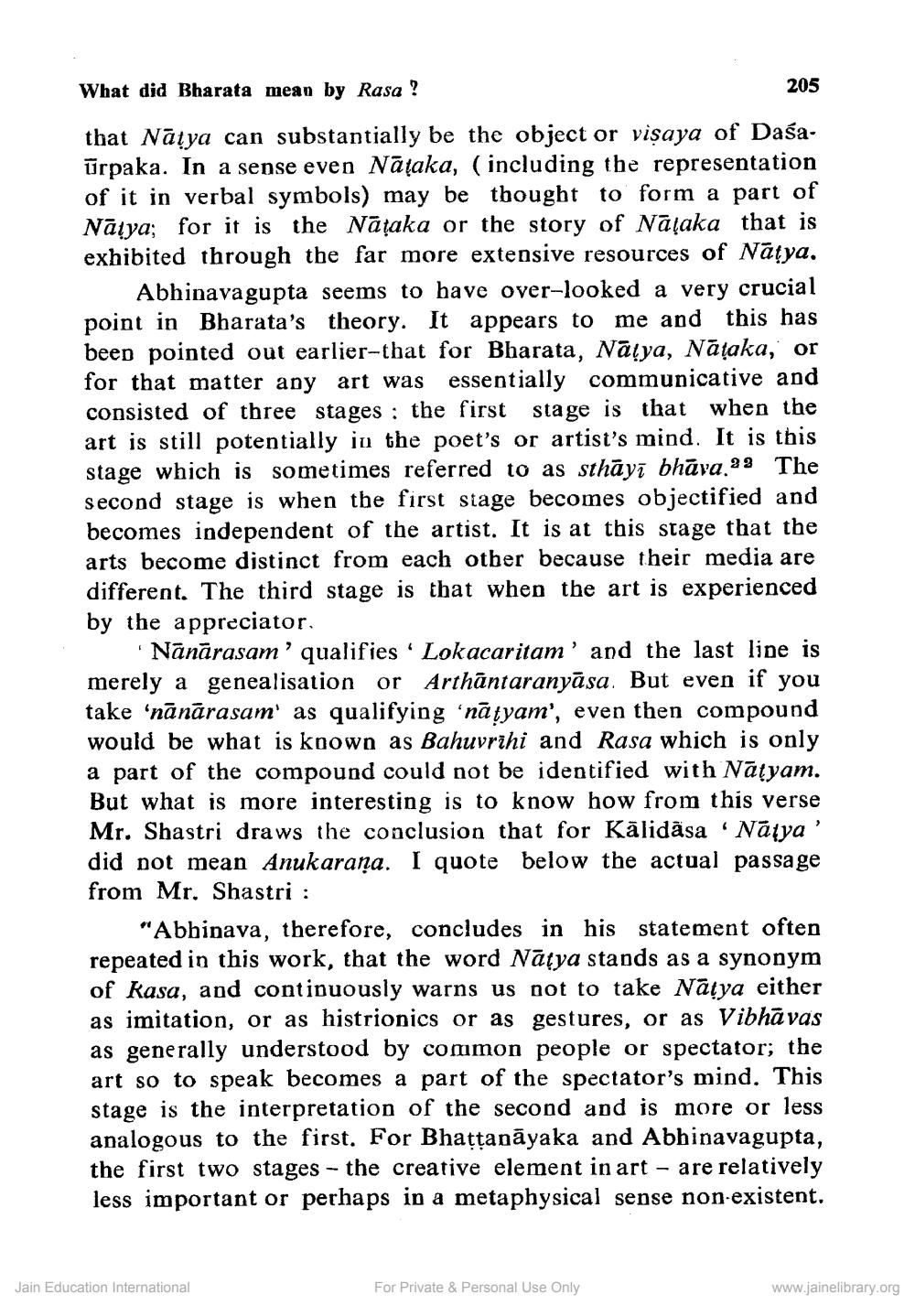________________
What did Bharata mean by Rasa ?
205
that Nāțya can substantially be the object or vişaya of Daśaūrpaka. In a sense even Nāļaka, (including the representation of it in verbal symbols) may be thought to form a part of Nāļya; for it is the Nāțaka or the story of Nāļaka that is hibited through the far more extensive resources of Natya,
Abhinavagupta seems to have over-looked a very crucial point in Bharata's theory. It appears to me and this has been pointed out earlier-that for Bharata, Nāļya, Nāļaka, or for that matter any art was essentially communicative and consisted of three stages : the first stage is that when the art is still potentially in the poet's or artist's mind. It is this stage which is sometimes referred to as sthāyī bhāva.99 The second stage is when the first stage becomes objectified and becomes independent of the artist. It is at this stage that the arts become distinct from each other because their media are different. The third stage is that when the art is experienced by the appreciator.
'Nānārasam' qualifies 'Lokacaritam' and the last line is merely a genealisation or Arthāntaranyāsa. But even if you take 'nānārasam as qualifying 'nātyam', even then compound would be what is known as Bahuvrihi and Rasa which is only a part of the compound could not be identified with Natyam. But what is more interesting is to know how from this verse Mr. Shastri draws the conclusion that for Kālidāsa Natya' did not mean Anukarana. I quote below the actual passage from Mr. Shastri :
"Abbinava, therefore, concludes in his statement often repeated in this work, that the word Nātya stands as as of kasa, and continuously warns us not to take Nāļya either as imitation, or as histrionics or as gestures, or as Vibhāvas as generally understood by common people or spectator; the art so to speak becomes a part of the spectator's mind. This stage is the interpretation of the second and is more or less analogous to the first. For Bhattanāyaka and Abhinavagupta, the first two stages - the creative element in art - are relatively less important or perhaps in a metaphysical sense non-existent.
Jain Education International
For Private & Personal Use Only
www.jainelibrary.org




